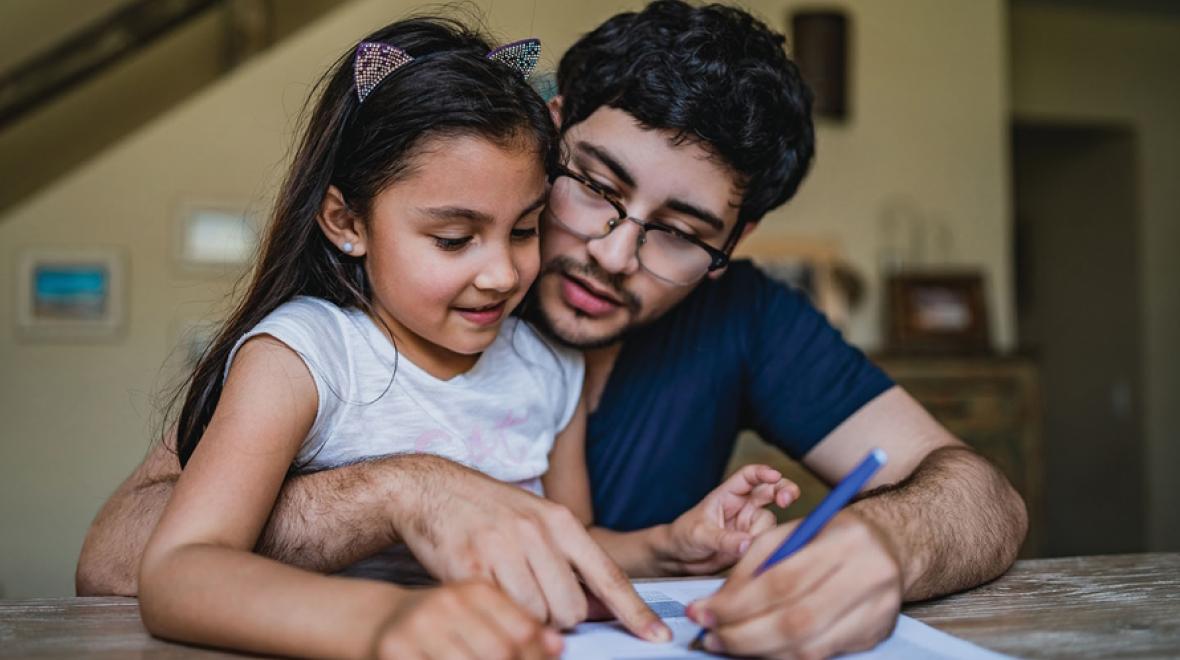
As kids get older, they sign an increasing number of contracts. Signatures are requested as acknowledgements of understanding school rules or promises to treat peers with respect. Kids pledge to use technology responsibly, to not plagiarize and to only miss sports practices for serious illnesses.
For adults, contracts are weighted with legal and financial responsibilities. But contracts for children don’t involve credit card numbers or litigious consequences, leading some to wonder about their efficacy: How well do contracts for kids work?
Research and real-life experiences point to the effectiveness of this system to set standards and manage behavior for kids of all ages, both in and outside of the home.
School contracts for elementary-age children
Kids often experience their first contract in kindergarten. In the Issaquah School District, students sign the Equity Pledge, committing to treating each other with kindness and respect. The process of signing a contract provides the space for teachers to talk about expectations and kindness. Schools believe such contracts are effective, especially since the pledges are often displayed in a common area, reminding kids to spread compassion and encourage a sense of belonging.
Contracts in middle and high school
Contracts multiply as students get older. “Secondary students have several contracts that they sign throughout the year,” reports Wendy Castleman, assistant director of communications for the Issaquah School District. “All students sign school handbooks to acknowledge regulations … [if] students and families do not complete the agreement in the student handbook, an administrator meets with the student to review the information and complete the document together. There are also legal contracts that are generated through discipline, attendance, safety and Harassment, Intimidation and Bullying (HIB) laws for students older than age 12.”
Then there are the online safety contracts that come with school-issued laptops. Parents also sign that document, acknowledging that schools cannot be held responsible for unsavory content that slips past the district’s filtering systems.
Signed contracts are often a school’s first line of defense when conflicts arise. Because the consequences are heftier in high school, so are the contracts. Receiving a zero on a plagiarized essay in fifth grade won’t affect a child’s future. In high school, that zero leads to a lower GPA or even a loss of credit. Meetings with families that are worried about their student’s college prospects, summer school fees or graduation can get pretty contentious. When students claim to not have known the rule and consequence in question, their signed name under school policies can shut down that argument. When acknowledged rules and consequences are clearly laid out in a handbook or course syllabus, consequences can be based on facts instead of emotions and personal feelings.
Just like an elementary school’s equity pledge, a school handbook provides a tool for schools to review expectations. “Administrators make it a point to go into every classroom and go over the handbook,” says Nate DuChesne, principal of Snohomish High School. “We have students sign a contract stating they received a handbook and understand the rules.” As in Issaquah, this paper trail helps Snohomish High School identify students who missed the handbook presentation, so they can be brought up to speed. “I don’t know if signing a contract actually encourages a student to follow rules,” says DuChesne, “but acknowledging they’ve at least heard the rules is a good first step.”
Individual classroom-behavior contracts
While school-wide contracts may not change behavior, research indicates that individual student contracts are quite effective. Unlike school-wide contracts, individual classroom contracts are collaboratively written. When a teacher and student come together to target specific behaviors, things improve. Education researcher Caitlyn Majeika, citing decades of research, writes, “Historically, behavior contracts have been used successfully in classrooms, homes, and therapeutic settings” to address a wide range of behavioral skills. Whether encouraging students to practice spelling words or targeting off-task behaviors, contracts work.
The key to individual contracts is collaboration. A teacher and a student develop the contract together by discussing the target behaviors, deciding a method for tracking progress, selecting a goal and reward, and determining procedures for when the student does or does not meet their goal. Individual contracts also model goal setting and behavior tracking, which are useful skills beyond the classroom.
Often, the most effective component is the tracking system. If a student frequently hops out of their seat when they should be working on an assignment, a contract can require the student to track the instances they get up, just like an adult might check off habits in a bullet journal. A reward or consequence is attached to the number of times the kid is out of the seat.
Clubs, sports and activities
School is not the only place where kids might sign a contract. Teams and clubs also embrace the practice. Camp Fire, a youth organization founded in 1910, features clubs that meet weekly to build community, explore the outdoors and make new friends. “At the beginning of the year, clubs individually decide on their expectations and club rules,” says Lisa, club program administrator at Camp Fire. “It’s a collaborative process. I encourage club leaders to post expectations so kids can refer back and remember their agreements. They’ll often use the contract to police each other.” While not required on an organizational level, many leaders will print out their club’s agreement as a contract for kids to sign.
Sports teams also frequently require contracts. The Washington Interscholastic Activities Association (WIAA) requires that student-athletes sign contracts, with attendance and grade requirements as well as consequences for drug and alcohol use.
Individual coaches often write contracts as well. “Contracts are essential,” says softball coach Kris Gonzalez. “I was very clear with my athletes that they are students first and represent the school. Each year my contract got more and more specific. If there was an issue one year, I added it to the contract the next year.” As in the high school principal’s office, contracts are essential for coaches who need to hold the line on consequences when faced with aggrieved athletes and their families.
Outside of school sports, however, contracts are not always required. The Seattle Synchronized Swim Team has produced many elite swimmers, including international competitors and Olympic athletes. Head coach Daniela Garmendia does not have members of Seattle Synchro sign contracts. “We discuss the rules and what values we want to have.” She has expectations, nonnegotiables and consequences, but not a contract. “Nobody is going back to look for that paper,” Garmendia says. Rather than create more administrative paperwork, Garmendia works to build team culture on a daily basis, constantly reminding her athletes to greet each other meaningfully and discuss what respect looks like. “If I have them sign something, it’s like I’m imposing on them,” she explains, “and I don’t feel good about that. Everyone around kids is always imposing things on them. I’d rather have a discussion and find answers together.”
Family contracts
Taking cues from schools, some families have implemented contracts at home, particularly involving cell phone or driving privileges. Other parents, sharing Garmendia’s worry about imposing yet another set of rules, favor discussions over a signed piece of paper. Both approaches can be effective. For families wanting to try contracts, collaboratively writing reward-based expectations seems to work best. For example, kids can track their phone usage and gain a reward for staying under a set time.
A family contract to communicate clear rules and consequences may also be used. However, these types of contracts are more useful in a school setting. Principals can simply point to a signature, point out a consequence and then point to the detention room. Your own teenager, furious about losing cell phone privileges, will likely not be calmed by the mere presence of a signed contract.
Family relationships are a bit more nuanced than school administration offices and WIAA record files, however. While contracts may be a good starting place, they won’t replace the need for continued discussions about family rules, expectations and consequences.











